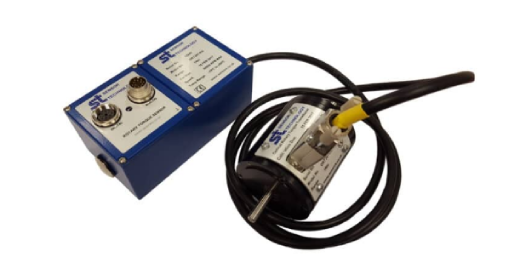The latest torque measurement technology offers precision, high-speed capability, and advanced diagnostics in one robust, non-contact solution.
Sensor Technology has introduced optical rotary torque transducers with the ORT 230/240 series, suited for applications requiring low torque and high bandwidth. These sensors measure rotary and static torque, ranging from 10mNm to 100Nm, with bandwidths up to 50kHz.
The devices use electronics that improve resolution, frequency response, and data throughput while reducing sensor current consumption. These devices are characterized by their speed capability due to minimal inertia, achieved because the electronics are not attached to the shaft. Their non-contact functionality ensures durability and reliability, supported by Sensor Technology’s lifetime warranty, and achieves accuracy. The optical principle of operation provides resistance to noise interference.
The ORT 230 series sensors offer voltage or current analogue outputs for torque and either speed or power measurements. In contrast, the ORT 240 series allows two user-selectable analogue outputs for torque and an additional measurement of speed, power, or peak torque. It also includes digital outputs like RS232, CANbus, and USB for integration with instrumentation and laptops. The ORT 240 supports connecting up to ten transducers via USB and includes software for transducer configuration adjustments.
Both models feature diagnostic capabilities that monitor if the torque, speed ratings, or calibration dates are exceeded. They also include sensors to monitor shaft temperature for compensation and accuracy and provide a sensor status output.
Complementary to these devices is the TorqView software from Sensor Technology, designed for Windows PCs. This software facilitates torque monitoring and data handling, offering real-time chart plotting and compatibility with Matlab and Excel. Additional LabVIEW VIs and DLLs are available for users interested in developing custom process control applications or software.
Optical rotary torque sensors operate by using a pair of gratings on a strain-sensitive shaft to modulate light as torque is applied, twisting the shaft and altering the light’s path to the detector. This method enables bi-directional torque detection, response times, and operation without the need for brushes or complex electronics, allowing up to 30,000rpm as a standard and higher speeds based on shaft size.
Original article source:
FAQ
- What is a torque sensor?
A torque sensor is a device used to measure and record the torque applied to a rotating system, such as engines, gearboxes, or electric motors. It captures the force needed to rotate an object, which is critical in ensuring accurate performance in various mechanical systems.
- How do torque sensors work?
Torque sensors work by detecting the twist or rotation of a shaft. Most sensors use strain gauges, piezoelectric materials, or magnetoelastic effects to measure the strain caused by torque and convert it into an electrical signal. This signal is then interpreted to give precise torque readings.
- What are the different types of torque sensors?
There are several types of torque sensors, including:
Rotary Torque Sensors: Measure torque in rotating systems.
Static Torque Sensors: Measure torque in non-rotating applications.
Contactless Torque Sensors: Use magnetic or optical methods for measurement without physical contact.
- What industries commonly use torque sensors?
Torque sensors are vital in industries such as automotive, aerospace, manufacturing, robotics, and medical device engineering. They are used for testing engines, designing efficient power transmission systems, and ensuring the durability of mechanical parts.
- Why are torque sensors important for precise measurements?
Torque sensors provide high accuracy and repeatability in measuring rotational force. This is crucial for applications like quality control in manufacturing, where even small deviations can lead to inefficiencies or part failures.
- How are torque sensors calibrated?
Torque sensors are calibrated by applying a known force to the sensor and recording the output. This process ensures that the sensor’s readings remain accurate over time. Calibration is typically done in a controlled environment and should be repeated periodically.
- What factors should I consider when selecting a torque sensor?
When choosing a torque sensor, consider:
Measurement Range: Ensure the sensor can handle the torque range for your application.
Accuracy: Check the sensor’s precision and how it meets your requirements.
Type of Load: Determine whether your application involves static or dynamic loads.
Environmental Conditions: Select a sensor that can withstand temperature, humidity, and other environmental factors.
